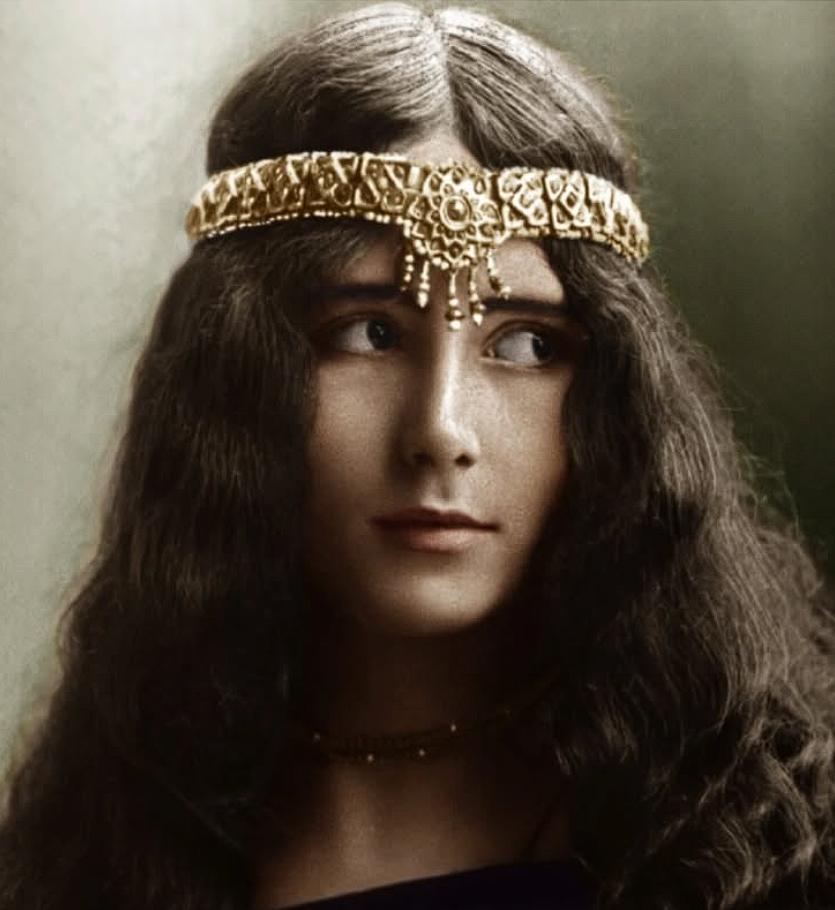Cléo de Mérode: The Dancer Who Became the Face of the Belle Époque
Before influencers and movie stars, the world was captivated by a dancer—Cléo de Mérode, a woman whose name became synonymous with elegance, beauty, and mystery during the Belle Époque. Long before Instagram, her face graced postcards, newspapers, and artist studios from Paris to Vienna.
Born in Paris in 1875, Cléopâtre-Diane de Mérode was destined for the stage. At just seven years old, she enrolled in the Paris Opera Ballet School. By eleven, she had made her professional debut. But it wasn’t only her talent that dazzled audiences—it was something more intangible. A kind of stillness, a refined presence, that turned her into a cultural obsession.

The Most Photographed Woman of Her Time
By her early twenties, Cléo had become a true celebrity. In an era when photography was still a novelty, she was among the first women to be mass-reproduced in images. Her signature hairstyle—a soft center part with hair swept over the ears—became iconic, inspiring countless imitations.
Photographers like Nadar and Leopold Reutlinger captured her ethereal presence. Her portraits were turned into postcards, collected and displayed by admirers across Europe. In many ways, she was the original “It Girl.”
But Cléo was more than a pretty face. She was a trained ballet dancer, known for her grace and subtlety on stage. Her style was understated—she rarely performed acrobatic leaps—but she drew audiences with her expressive movements and poised demeanor.
Muse of the Masters: Degas, Toulouse-Lautrec, and More
Cléo’s appeal extended beyond the stage. She was a muse to some of the most influential artists of her time. Edgar Degas sketched her. Henri de Toulouse-Lautrec, known for immortalizing Parisian nightlife, painted scenes from her world. Even Gustav Klimt was rumored to have been fascinated by her.
These artists saw in Cléo a mystery, a modern woman both admired and misunderstood. She became the embodiment of Belle Époque ideals: delicate, aloof, endlessly fascinating.
The Scandal That Haunts Her Legacy
But fame came at a cost. In the late 1890s, Cléo was linked by rumor to King Leopold II of Belgium, a much older and notoriously controversial figure. The tabloids exploded. She was suddenly portrayed not just as a dancer, but as a royal mistress.
The rumors, entirely unfounded, haunted her for decades. In her later memoir, Le Ballet de ma vie (1955), Cléo addressed the scandal directly, insisting:
“I have only ever loved twice in my life—and neither of them wore a crown.”
Despite her attempts to correct the public record, the whispers followed her. They say beauty is a blessing, but for Cléo, it was sometimes a curse.
Dancing Into Her Fifties: A Life on Her Own Terms
While many ballerinas retired young, Cléo continued to perform well into her fifties. Her later dances were not full ballets but stylized solo performances, often in salons or private theatres. She had little interest in chasing stardom. Instead, she lived quietly in Biarritz, away from the chaos of the spotlight.
In an age when women’s careers were often dictated by youth and marriage, Cléo carved her own path. She never married. She never chased titles or roles. She danced, she lived, and eventually, she wrote her own story.
Cléo de Mérode passed away in 1966 at the age of 91. She had outlived nearly everyone who had once painted, photographed, or gossiped about her.
A Timeless Symbol of Feminine Mystery
Today, Cléo de Mérode is remembered less for a single performance and more for the aura she created. She wasn’t just a dancer. She was a cultural phenomenon, a mirror for the desires and contradictions of her time.
In an age obsessed with celebrity and image, Cléo’s story feels strikingly modern. She crafted a persona, endured scrutiny, and maintained an air of dignified silence. Her legacy is not in scandal but in resilience—and the timeless art of presence.

CÁC TIN KHÁC
Mary Walton: The Forgotten Inventor Who Helped Clean Up America’s Cities
Tomb of Queen Nefertari in the Valley of the Queens, Egypt
Discover the Hypostyle Hall of the Temple of Hathor at Dendera
Venus de Losange: Unveiling the Mystery of a 20,000-Year-Old Paleolithic Icon